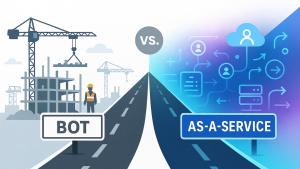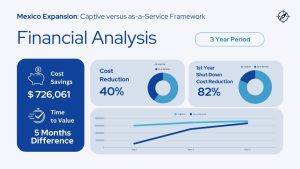As more companies expand globally, thanks to cost-efficient frameworks that have made international growth accesible to companies of all sizes, there’s one thing we’re still collectively struggling with: what exactly do we call these new foreign operations?
Are we building a Global Capability Center or a Center of Excellence? Launching a Micro Capability Center through a Subsidiary-as-a-Service model? Or is it a GCC-as-a-Service? A Delivery Hub? Or just “our new team in Monterrey”?
The industry is using all these terms, and often interchangeably. But each carries distinct strategic and structural implications. The lack of consistency isn’t just confusing. it’s becoming a blocker to clarity, alignment, and execution speed.
Framework vs. Function: Know the Difference
Let’s draw a simple but important line.
Frameworks describe howyou enter a new country:
These are enablement models—providing the legal, operational, and compliance infrastructure to get up and running.
Operational Centers describe whatyou run in the new location:
- Global Capability Center (GCC)
- Global Business Services (GBS)
- Center of Excellence (CoE)
- Nearshore Delivery Center
- Regional Office
This distinction often gets lost. Someone might say they’re setting up a “GCC”, when in fact they’re launching a 30-person team under a SUBaaS partner to support the Product QA department of the headquarter.
The Rise of the Micro Capability Center
As expansion strategies shift from traditional offshore centers to nearshore locations like Mexico, we’re seeing a new business practice emerge: the Micro Capability Center.
According to ISG, this is typically refers to a <100-person operation, which can be set up quickly through a SUBaaS model. It’s lean, agile, and often pilot-stage. These cross-functional teams deliver significant value, often testinf and launching new IT or business initiatives.
Companies hesitate to call a 30- or 40-person team a “CoE”, or a “GBS”. These regional offices regional offices frequently blend engineering, administrative, and go-to-market roles that support the region they’re based in.
Offshore vs. Nearshore Strategies
Much of the terms—GCC, GBS, CoE—comes from the offshoring playbook. It made sense in places like India, the Philippines, or Eastern Europe, where operations were designed for volume and cost efficiency.
But companies use nearshore strategies differently, taking advantage of proximity. Tech companies using nearshore usually fall in these two categories.
a. Large Enterprises with existing offshore operations.
They add nearshore centers for functions that require customer proximity, time zone alignment, or real-time collaboration. These teams are usually smaller than their offshore counterparts and focused on regional support. (how Mexico supports North and South America).
b. SMB and Companies with no foreign footprint.
These firms are risk-averse and prefer smaller, more controlled initial expansions. Nearshore locations like Mexico offer cultural affinity, and flight times equivalent to cross-country U.S. travel—making them the ideal first step.
An added benefit? Once established, these nearshore centers can evolve into a regional commercial office to enter a new market, like Latin America.
Trying to apply traditional offshore terminology to nearshore centers builds creates unnecessary confusion to the company strategy. The nature and purpose of these centers are often different; the terminology should reflect that.
So… What Should We Call It?
Getting the name right isn’t just about semantics—it impacts:
- Stakeholder alignment: Leadership, board, and teams need to know what’s being built and why.
- Strategic clarity: A “Global Capability Center” implies a different level of investment, risk, and effort than a “regional team under SUBaaS.”
- Timing & scale: Launching a 500-person GCC in India is a high-commitment move. Starting with a 30-person pilot team in Mexico? Lower barrier, quick pivoting.
- Financial expectations: Large-scale GBS centers require scale to reach break-even. SUBaaS teams in nearshore markets can be cost-efficient from day one.
Why Terminology Matters
- Until the industry reaches consensus, Subsidiary-as-a-Service may be the most broad, and flexible label for nearshore expansion. It doesn’t constrain the operation to a single function, neither overpromises, and does not commit to a certain scale size.
In practice, companies use this model to open Micro Capability Centers focused on everything from engineering to marketing to AI data teams. And as these operations mature, they can evolve—into full-fledged Centers of Excellence or independent subsidiaries—without the branding mismatch.
In Conclusion
If we want to scale globally with speed and clarity, we need to align on terminology. Let’s distinguish between:
- Where we build it (Offshore vs. Nearshore)
- How we expand(Framework: SUBaaS, BOT, Shelter)
- What we build(GCC, CoE, GBS, Delivery Center)
Whatever the combination of these 3, it will serve a different strategic purpose.
And for today’s agile, strategic nearshore builds—especially in places like Mexico— reading about another company using the Subsidiary-as-a-Service framework to start a Micro Capability Center might start to become more common than you think.y.



